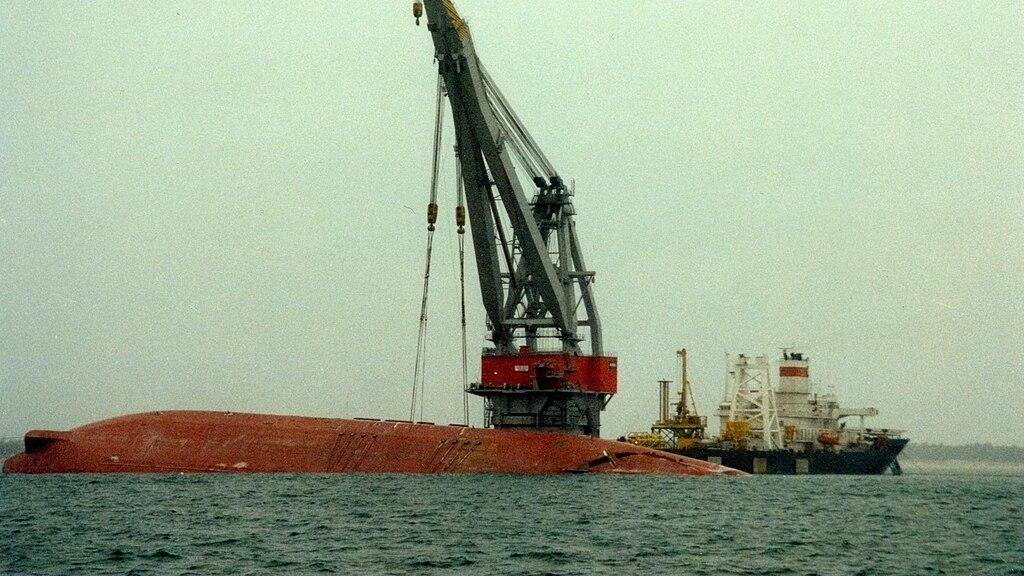
Experts warn the Baltic Sea is heading for a major oil spill disaster
Thank you for choosing Automatic Translation. Currently we are offering translations from English into French and German, with more translation languages to be added in the near future. Please be aware that these translations are generated by a third party AI software service. While we have found that the translations are mostly correct, they may not be perfect in every case. To ensure the information you read is correct, please refer to the original article in English. If you find an error in a translation which you would like to bring to our attention, it would help us greatly if you let us know. We can correct any text or section, once we are aware of it. Please do not hesitate to contact our webmaster to let us know of any translation errors.
The Baltic Sea, one of the world’s busiest and most ecologically fragile bodies of water, is teetering on the edge of a major environmental disaster. According to Swedish maritime safety expert Jonatan Thörnqvist, a large-scale oil spill in the region is not a matter of “if,” but “when”, reports Swedish Television News.
With over 2,000 commercial vessels navigating the narrow sea lanes daily—including oil tankers, chemical carriers, and bulk cargo ships—the risk of collision, grounding, or mechanical failure is rising. The Baltic’s shallow depth, limited water exchange, and sensitive ecosystems make it particularly vulnerable to long-term damage from oil contamination.
A Crowded and Complex Sea
The Baltic Sea is bordered by nine countries, including Sweden, Finland, Russia, Germany, and Poland. It’s a geopolitical crossroads and a commercial artery, with traffic increasing steadily over the past decade. According to the Helsinki Commission (HELCOM), the number of hazardous cargo shipments has grown by more than 30% since 2015.
The region’s narrow straits and congested shipping lanes—especially around the Danish Straits and the Gulf of Finland—are hotspots for near-misses and minor spills. In 2023 alone, HELCOM recorded 38 oil spill incidents, most of which were attributed to operational discharges or accidents in port.
Environmental Fragility
Unlike open oceans, the Baltic Sea has limited circulation and low salinity, meaning pollutants linger longer and degrade more slowly. A major spill could devastate fish stocks, seabird populations, and coastal habitats for decades. The WWF Baltic Ecoregion Programme has repeatedly warned that the sea’s resilience is weakening due to eutrophication, overfishing, and climate change.
Thörnqvist emphasized that emergency response capabilities are uneven across the region. “Some countries have robust spill response fleets and containment systems. Others rely heavily on international assistance,” he said to SVT.
Calls for Action
Environmental groups and maritime safety advocates are urging Baltic nations to strengthen joint monitoring, enforce stricter vessel traffic regulations, and invest in rapid-response infrastructure. The European Maritime Safety Agency (EMSA) has deployed satellite surveillance and drone patrols to detect illegal discharges, but enforcement remains patchy.
In Sweden, the Coast Guard has increased its training and readiness, but officials admit that a large spill—especially in winter ice conditions—would overwhelm current resources.
A Global Warning
The Baltic’s predicament echoes similar concerns in other semi-enclosed seas, such as the Mediterranean and the South China Sea, where dense shipping and fragile ecosystems collide. Experts say the Baltic could serve as a test case for international cooperation on maritime risk management.
As Thörnqvist put it: “We’re sailing blind into a disaster. The time to act is now.”
Photo Credit: Wikipedia Creative Commons License
Russian crane vessel Stanislav Yudin rightening the capsized pusher-barge combination (integrated tug and barge) Finn-Baltic off Hanko on 27 January 1991.
Suomi: Venäläinen nosturialus Stanislav Yudin kääntämässä kaatunutta puskuproomuyhdistelmä Finn-Balticia Hangon edustalla 27. tammikuuta 1991.
Date: 27 January 1991
Source
https://www.flickr.com/photos/141806384@N07/36247473790
Author: Unknown; courtesy of Kymenlaakson museo, Merivartiomuseo.
